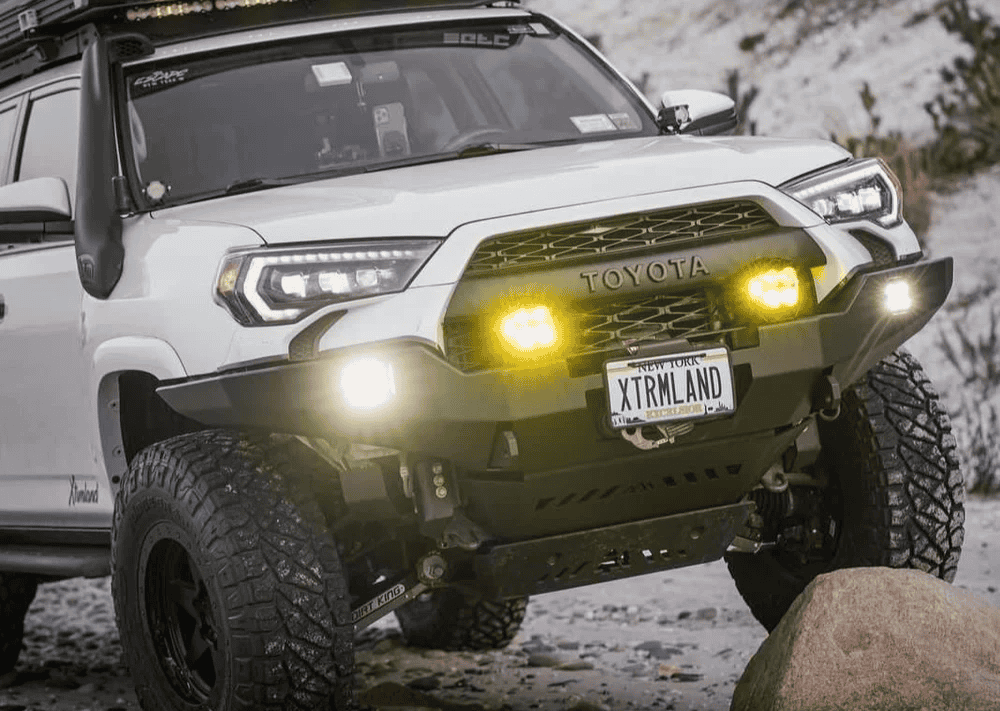Overland Vehicles

Clean water on the road comes down to three decisions: how much you carry, where you carry it, and how you keep it safe. Start by estimating daily use. Most travelers plan two to four gallons per person per day for drinking, cooking, and light washing. Add margin for hot climates, pets, or longer boondocking stretches.
Tank material matters. Food grade polyethylene is common because it resists impact, is easy to sanitize, and does not add taste. Stainless is strong and tolerant of heat but costs more and needs careful welding and support. Soft bladders save space but can be harder to clean. Whatever you choose, use only potable rated parts from fill to faucet.
Placement affects handling and safety. Keep weight low, near the axle line, and centered left to right. Secure the tank with braced framing and mechanical straps, never just adhesive. Include a vent high point to prevent vacuum lock during fill and draw, and a drain at the low point so you can winterize or service the system.
Match capacity to your travel rhythm. Weekend trips might thrive on 15 to 25 gallons, while remote overland travel often lands around 30 to 50 gallons depending on crew size. If space is tight, split capacity into two tanks with a balance valve. This provides redundancy and helps with trim balance.
A typical layout includes a city fill port, a screened fill line to the tank, a vent line, a pickup to a pump, and a distribution manifold. Use flexible potable tubing with proper bend radiuses, PEX or reinforced vinyl, and stainless clamps. Add an accumulator to smooth pump pulses and protect fixtures. Label shutoffs so isolation and service are quick.
Insulate tanks, lines, and pumps that live near the exterior. Direct a heat duct or use pad heaters for subfreezing trips. Route lines inside conditioned space whenever possible. Add a convenient low point drain and blowout port to prep for storage.
Filtration is not one size fits all. Design your stages to match the water you feed the system. If you always fill from treated city sources, a sediment filter and carbon block may be plenty. If you draw from streams or uncertain taps, add disinfection such as UV or chemical dosing.
Sediment filtration comes first. A washable screen or pleated cartridge at 50 to 100 microns protects the pump and extends life of finer filters. A second stage between 5 and 20 microns catches smaller particles and cysts depending on the cartridge design. Follow with a carbon block to remove chlorine, taste, and odors.
Flow rate and contact time matter. A high flow pump can bypass the effectiveness of certain cartridges if they are undersized. Match filter size to expected gallons per minute so you do not choke flow at the sink or shower. Install pressure gauges before and after the bank so you can see when cartridges are loaded and ready for replacement.
Disinfection options include UV, chemical, and heat. UV systems treat water as it passes a lamp rated to your flow, and they work best with clear water after sediment stages. Food grade chlorine dosing is simple for tanks but needs correct concentrations and contact time. Boiling remains a fail safe for cooking. Whatever method you pick, follow the manufacturer’s maintenance intervals and replace lamps or cartridges on schedule.
Serviceability keeps the setup safe. Mount filters where you can reach them without removing cabinetry. Use clear bowls on sediment stages so you can see loading. Keep spare cartridges, o rings, lube, and a dedicated filter wrench in the rig. Build an easy flush routine and record the schedule so you do not guess in the field.
Vans and overland rigs benefit from quiet pumps, vibration isolation, and thoughtful routing. Mount the pump near the tank pickup with a pre filter, soft mounts, and short runs to reduce cavitation. An accumulator smooths cycling and lowers noise. Quick disconnects at fixtures make upgrades and repairs simple.
Grey water handling adds hygiene and convenience. Use a dedicated grey tank with a trap and vent to control odors. Keep the drain valve accessible and labeled. If you camp in freezing conditions, route grey into a protected container and dispose of it in accordance with local rules.
Monitoring avoids surprises. Add a digital level gauge for the fresh tank, and a simple flow meter can track daily use so you learn your pattern. A small mixing valve at the galley helps save hot water. Insulate the hot line from the heater to the faucet to reduce waste.
Well planned systems pair with a reliable power strategy. UV, pumps, and heaters all draw current. Size wiring and fusing properly, mount a service switch you can reach, and test under full load before the first trip.
When you want a turn key solution, the OZK team builds water storage and filtration setup packages that fit your platform and route. Explore Overland rigs at OZK to see how complete systems integrate with power, heating, and storage. For tailored layouts, fittings, and winter ready routing, our Custom overland upfit service handles design, fabrication, and installation.
Safe water is more than parts. It is planning, clean install work, and thoughtful testing. See what sets our process apart at Why choose OZK Customs, then schedule your build slot. Our Fayetteville shop hands off rigs with a complete walkthrough so you leave confident and ready for the next long stretch of open road.
Ready for reliable water on every trip? Our team designs and installs complete water systems that fit your platform, power profile, and travel style. Share your route, passenger count, and use cases, and we will blueprint a system that delivers safe drinking water with quiet operation and easy service. Book a consult to get your build scheduled at OZK Customs in Fayetteville, Arkansas.
ADDRESS:
6159 E Huntsville Rd, Fayetteville, AR 72701
PHONE:
(479) 326-9200
EMAIL:
info@ozkvans.com